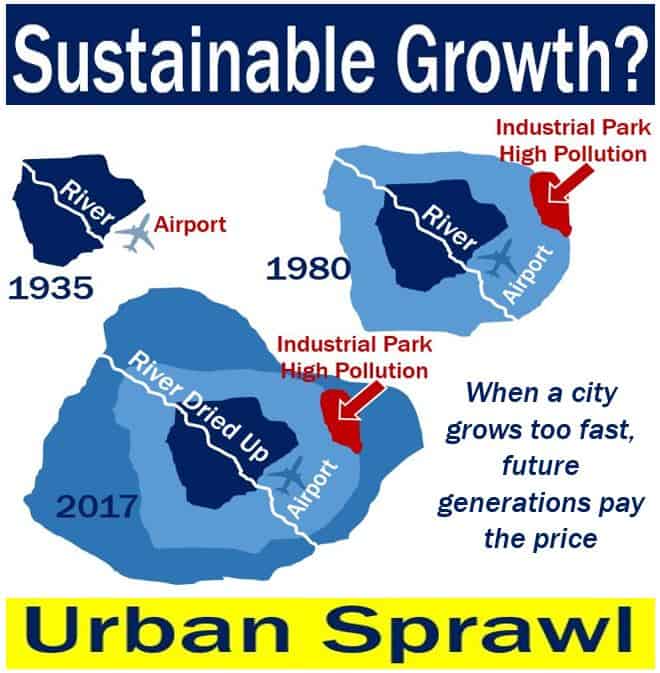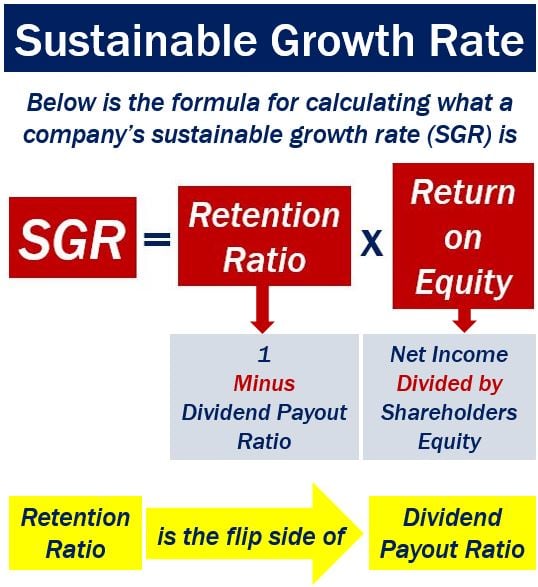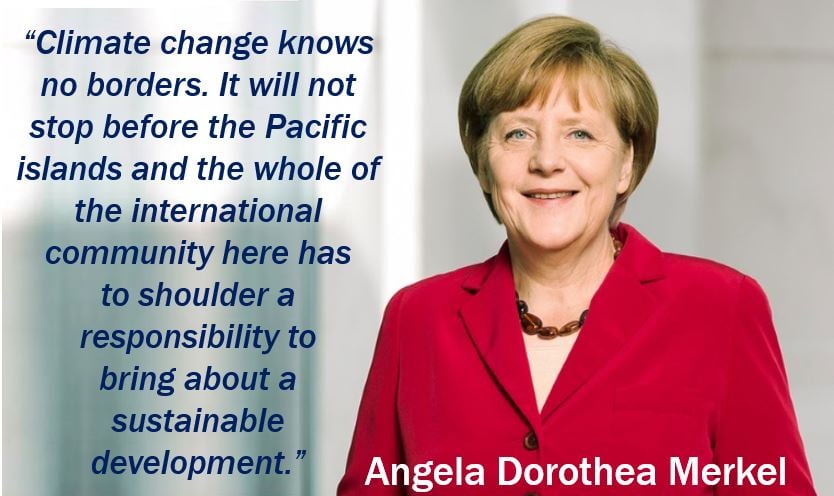What is sustainable growth? Definition and meaning
Sustainable Growth has two main meanings in the world of business and finance – a traditional and a more recent meaning.
- Sustainable growth, traditionally, has meant the realistically achievable growth that a company or national economy could maintain without running into problems.
- Today the term is frequently used by environmentalists, meaning economic growth that can continue over the long term without creating intolerable pollution or using up all the non-renewable resources.
Inflation
Inflation is a common problem that can undermine an economy’s sustainable growth. At company level, growing too rapidly and finding it hard to fund that growth is a common problem that commercial enterprises run into.
A company’s sustainable growth rate (SGR) is the fastest growth rate it can sustain at its current level of financial leverage. In other words, a commercial enterprise’s SGR is how much it can grow before it has to get further into debt.

Sustainable growth of an economy
GDP growth occurs when real output expands over time. Real output is measured by GDP at constant prices, in other words, after removing the effect of inflation on the value of national production.
Sustainable economic growth refers to a rate of growth which a country can maintain without creating other significant economic problems, especially for generations to come.
-
Future cost of rapid growth
Rapid economic growth today is great, but it often comes with a trade-off regarding future economic and financial health. If an economy grows too rapidly today, the process may exhaust resources and cause environmental problems for the next generation, or the following one.
Examples of environmental problems include global warming, oil supplies, and fish stocks.

If an economy grows too rapidly, it may encounter the following economic problems:
- Goods and services inflation
- Wage inflation
- Labor shortages
- Declining savings
- Too much borrowing
- Trade difficulties
- House price inflation
In an article titled ‘Sustainable Growth’, the publication Economics Online writes:
“Periods of growth are often triggered by increases in aggregate demand, such as a rise in consumer spending, but sustained growth must involve an increase in output. If output does not increase, any extra demand will push up the price level.”
As far as sustainability is concerned, economists argue that growth based on short-term public debt, instead of greater long-term productivity, is not sustainable.
-
Capacity for growth
For successful sustainable growth, an economy needs to increase its capacity to grow – this is achieved with greater productivity.
Productivity refers to how much is produced per unit of input. For example, if one worker produced 20 shirts per week in a factory last year, and 25 shirts per week this year, his or her productivity has increased by 25% or one quarter.

Sustainable growth for a business
Entrepreneurs all face the huge challenge of creating long-term value with limited resources. Fast Company magazine offers the following fundamentals of sustainable growth for commercial enterprises:
-
Clear purpose
Every business should have a clear vision of why it does what it does. That is its North Star which guides every aspect of its activities and commercial behavior, from product development and sales to recruitment.
-
Partnership and Collaboration
Sustainable growth is never achievable for the micromanaging control freak. During the early days when funds are low, it is tempting to do everything yourself.
A hands-on approach is great, however, you damage your company’s prospects if you take on more than you can handle, especially in areas where you do not excel.

-
Strong Brand
Building brand equity and emotional connections with customers is crucial. The stronger the attachments are that link customers to a company’s products, the more likely they are to keep coming back.
-
Keeping Existing Customers
Customer retention is much cheaper than finding new ones. Did you know that if you increase customer retention by just 2%, it has the same effect as reducing your business costs by 10%?
A report published by the US Chamber of Commerce and the US Small Business Administration – ‘Work, Entrepreneurship, and Opportunity in 21st Century America‘ – pointed out that:
– The likelihood of selling to a new customer is 5-20% compared to 60-70% with an existing customer.
– You are four times more likely to do business with an existing customer than a new one.
– On average, US companies lose approximately half of their customer base every five years.
-
Repeatable Sales
It is not enough to simply create a unique product and brand. For effective sustainable growth, it is vital to design and implement sales processes that can be effectively deployed repeatedly, each time at a greater scale.
Leveraging data-driven analytics can optimize these processes, ensuring that growth strategies are adaptable and responsive to market dynamics. Embracing innovation also plays a crucial role, as it allows businesses to continuously improve and evolve their offerings to meet the changing needs of the market.
-
Community
Companies exist in a business ecosystem where people, organizations and other entities interact in thousands of different ways. Ecosystems are vital for sustainable growth because they provide your company with the structure it needs to support it.
Sustainable growth – vocabulary & examples
There are many terms in business/finance/economics English related to “sustainable growth,” especially compound nouns, such as “sustainable growth strategy.” Here are more such compound nouns, their meanings, and examples of how we can use them in a sentence:
-
Sustainable Growth Strategy
A plan of action designed to achieve growth that is economically, environmentally, and socially sustainable.
Example: “The company unveiled its sustainable growth strategy, focusing on renewable energy sources.”
-
Sustainable Growth Rate
The maximum rate at which a company can grow its sales and earnings without borrowing new funds or overextending its financial resources.
Example: “Analysts have calculated that the sustainable growth rate for the tech startup is 15% per year.”
-
Sustainable Growth Model
A theoretical framework that integrates various aspects of growth with sustainability principles.
Example: “Their sustainable growth model incorporates factors like carbon footprint and community impact.”
-
Sustainable Growth Plan
A detailed roadmap for achieving sustainable growth, including specific targets and initiatives.
Example: “The city’s sustainable growth plan includes measures to increase green spaces and reduce traffic congestion.”
-
Sustainable Growth Index
An index or measurement that tracks the sustainability of growth by assessing various economic, social, and environmental indicators.
Example: “The country’s sustainable growth index improved, indicating better management of its natural resources.”
-
Sustainable Growth Fund
A fund that invests in companies or projects that contribute to sustainable growth.
Example: “Investors are showing great interest in the sustainable growth fund due to its focus on clean technology.”
-
Sustainable Growth Policy
A set of guidelines or principles adopted by an organization to ensure that its growth does not harm the environment or society.
Example: “The new sustainable growth policy prohibits the company from investing in industries that cause significant pollution.”
Video – What is Sustainable Growth?
This interesting video, from our sister channel on YouTube – Marketing Business Network, explains what a ‘Sustainable Growth’ is using simple and easy-to-understand language and examples.

